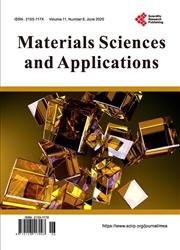Influence of Types of Fillers on Workability, Bleeding, Compressive Strength, and Degree of Compaction of Hydraulic Concrete
引用次数: 0
Abstract
This study aims to determine the optimal quantity of fillers to add to hydraulic concrete and to assess the influence of these fillers on its rheological characteristics and mechanical properties. The characterization of the aggregates shows that they meet the specifications for the formulation of hydraulic concrete according to the Dreux-Gorisse method. Normalizing the formula to the cubic meter enables to define the standard concrete. The cement content is 350 kg/m3. The mineral materials added to the concrete to increase its characteristics and properties are limestone, basalt, and sandstone fillers with a weight percent of 4%, 5%, and 3% respectively. Changes in concrete properties with the addition of fillers were determined through geotechnical tests. The results obtained show a decrease in the workability measured by slump test which returned 7.8 cm for the standard concrete sample, 7.2 cm with 5% of basalt, 7.3 cm with 4% of limestone, and 6.1 cm with 3% of sandstone. Regarding the bleeding, the results show that it decreases leading to a substantial improvement in stabilization reaching 26% with 5% of basalt fillers, 29% with 4% of limestone fillers, and 31% with 3% of sandstone fillers. The compressive strengths noted Rc28 at 28 days increases compared to that of the standard concrete, which is 31.5 MPa. They increase to 34.3 MPa with 5% of basalt fillers being 8.9%, 36.2 MPa with 4% of limestone fillers being 14.9%, and 36.8 MPa with 3% of sandstone fillers being 16.8%. Finally, the addition of fillers increases the degree of compaction values to 83.62% with 5% of basalt fillers, 84.2% with 4% of limestone fillers, and 84.34% with 3% of sandstone fillers.填料类型对水工混凝土和易性、渗水、抗压强度和压实度的影响
本研究旨在确定水工混凝土中填料的最佳添加量,并评估这些填料对其流变特性和力学性能的影响。骨料的表征表明,它们符合按照德鲁克斯-戈里斯方法配制水工混凝土的规格。将公式归一化为立方米可以定义标准混凝土。水泥掺量350kg /m3。为了提高混凝土的特性和性能,在混凝土中添加的矿物材料是石灰石、玄武岩和砂岩填料,其重量百分比分别为4%、5%和3%。通过岩土工程试验确定了掺入填料后混凝土性能的变化。结果表明,坍落度试验测量的工作性下降,标准混凝土试样的工作性下降7.8 cm, 5%玄武岩的工作性下降7.2 cm, 4%石灰岩的工作性下降7.3 cm, 3%砂岩的工作性下降6.1 cm。结果表明,在掺5%玄武岩填料、4%石灰石填料和3%砂岩填料的情况下,溢流量减小,稳定性显著提高,分别达到26%、29%和31%。与标准混凝土的31.5 MPa相比,28天的抗压强度Rc28有所增加。5%玄武岩掺量为8.9%时为34.3 MPa, 4%石灰石掺量为14.9%时为36.2 MPa, 3%砂岩掺量为16.8%时为36.8 MPa。掺入5%玄武岩、4%石灰石和3%砂岩的压实度值分别达到83.62%、84.2%和84.34%。
本文章由计算机程序翻译,如有差异,请以英文原文为准。
求助全文
约1分钟内获得全文
求助全文

 求助内容:
求助内容: 应助结果提醒方式:
应助结果提醒方式:


